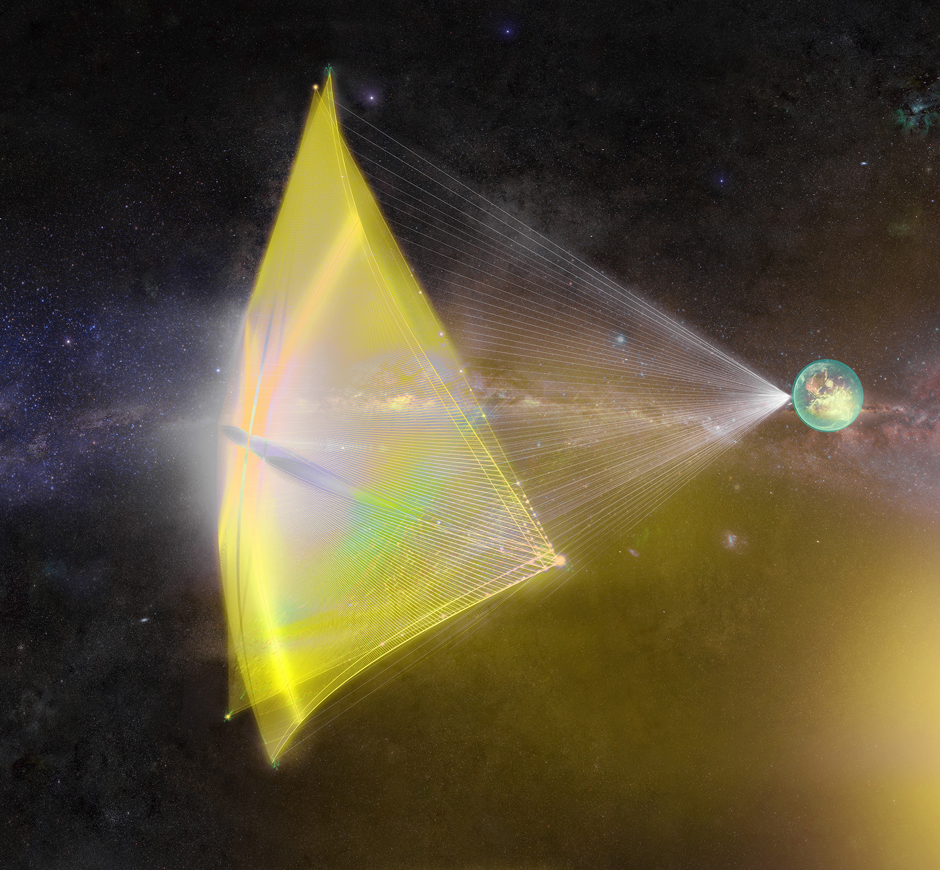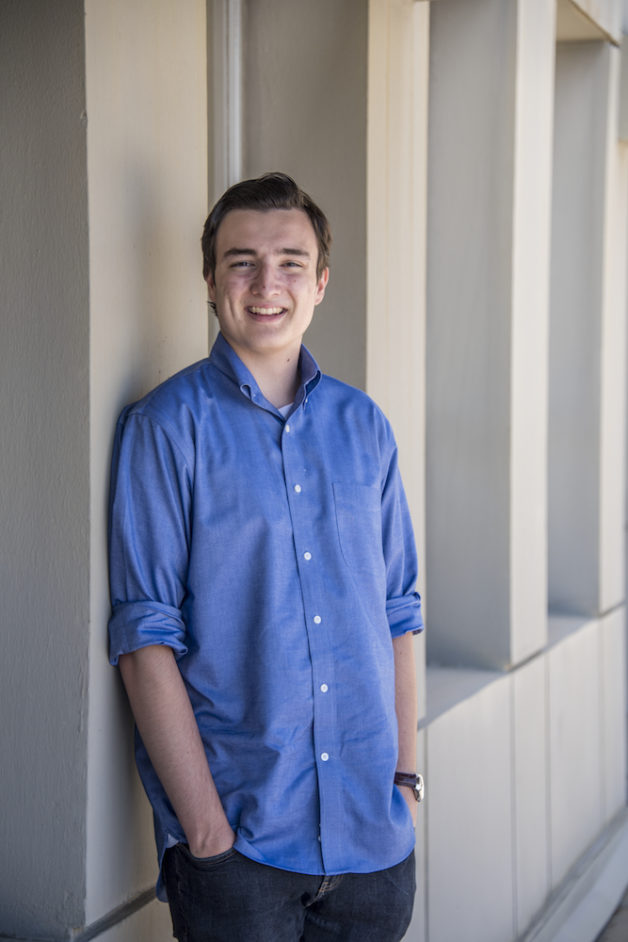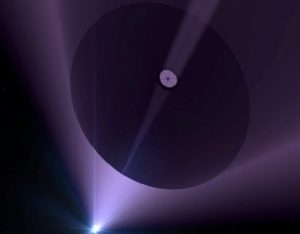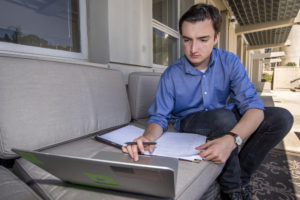Elliot Heywood had dreamed of landing an internship at the science lab in the hills not far from his school in Lafayette, California, but he never could have imagined this dream would take wing as a summerlong stint researching an ultrafast interplanetary propulsion system.
In May, after a friend and fellow high school senior at the Bentley School put him in touch with his father, a computer scientist at Berkeley Lab – the U.S. Department of Energy’s Lawrence Berkeley National Laboratory – Heywood received an unexpected email.
His friend’s father had reached out to Carl Pennypacker, an astrophysicist at Berkeley Lab and UC Berkeley, and Pennypacker had invited Heywood to the Lab.
Another way to get to Mars …
“Carl emailed me, saying, ‘I want you to work on this Mars project,’” said Heywood, who is 18. Pennypacker is also a science educator who founded the Hands-On Universe program in the 1990s that connects students with astronomical observatories around the world.
Heywood’s school requires seniors to participate in an internship before graduating, so the timing was perfect. His introduction to Berkeley Lab was a TED Talk by Mina Bissell, a cell biologist at the Lab whose work has benefited cancer research; ever since, he’d wanted to experience for himself what it was like to work there.
“I remember just being mesmerized and thinking, ‘There’s no other place like this in the Bay Area’ – so many people doing so many amazing things,” he said. “To be invited here, this was really an honor for me.” He added, “I knew that coming here was going to be invaluable in terms of the connections I was going to make with people and the work I would be doing.”
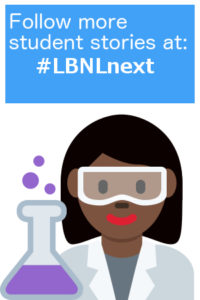 During the month of May, Heywood traveled to the Lab five days a week to work on calculations for this project. After graduating from high school he stayed aboard at the Lab for a summer internship, ending his work there in early August.
During the month of May, Heywood traveled to the Lab five days a week to work on calculations for this project. After graduating from high school he stayed aboard at the Lab for a summer internship, ending his work there in early August.
Heywood was tasked with exploring what it would take to send one crew member and supplies in a spacecraft weighing just over 1 ton in total, or about 2,300 pounds, to Mars using finely focused laser light.
The laser-based system would greatly reduce the time it would take to make this journey, which would reduce the astronaut’s exposure to space radiation and also reduce the required payload and overall size of the spacecraft. It may sound like the stuff of science fiction, but there is solid scientific ground for this type of propulsion system.
Phil Lubin of UC Santa Barbara – a former student of Berkeley Lab physicist and Nobel laureate George Smoot, and a colleague of Pennypacker’s – is part of a team that is studying how to develop a light-based propulsion system to send tiny, unpiloted spacecraft – dubbed nanocraft – to the nearest star system, Alpha Centauri, on beams of light. Alpha Centauri is about 4.4 light-years away.
This work builds upon successes such as the Japan Aerospace Exploration Agency’s 2010 launch of a solar sail spacecraft, IKAROS, using sunlight for propulsion much like a sailboat uses wind. And the Planetary Society in May 2015 tested a “CubeSat,” or tiny satellite, dubbed LightSail, also propelled by a solar sail. Planning is underway for a successor LightSail mission.
Big challenges for big spacecraft
Light-based propulsion systems could conceivably cut the Earth-to-Mars travel time from 5-10 months down to weeks or days, though larger payloads would require much larger laser systems.
During his internship, Heywood attended a presentation by Jessica Lu, a UC Berkeley astronomer, and he also studied up on research by Lubin, who has been working on light-based propulsion systems for spaceflight and asteroid defense.
Heywood corresponded with Lubin, met with Nobel laureate Saul Perlmutter – a Lab physicist who studies supernovae and dark energy – and he also communicated with other Lab scientists during his internship. “Just interacting with these scientists was a really gratifying and rewarding experience,” Heywood said. “I learned not to be afraid to ask questions, and to do independent research.”
His work culminated in a 13-page paper that he hopes will be followed up with more research. The spacecraft envisioned in the paper would have a light sail measuring about 935 feet (285 meters) in diameter, and the spacecraft and sail would together weigh about 1,760 pounds.
The spacecraft could be launched with conventional propulsion into Earth’s orbit, where the sail would be deployed. Laser light would then be focused on the spacecraft – with “noise” from Earth’s atmosphere corrected by an adaptive optics system – via a ground-based telescope or telescopes.
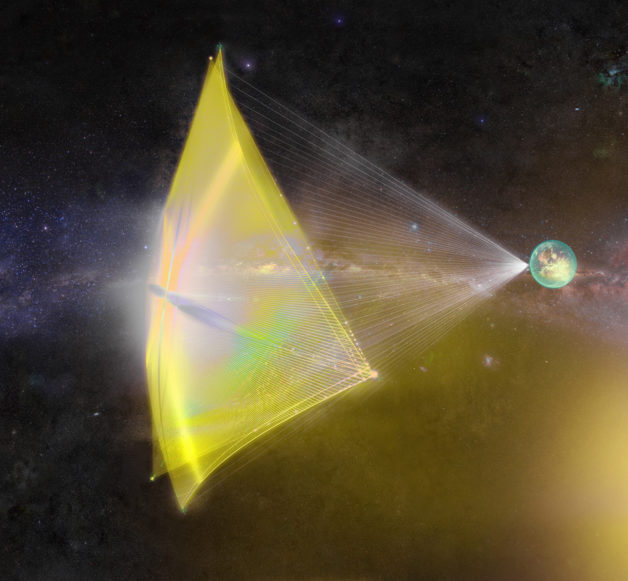
Illustration of a light-driven solar sail (left), with Earth pictured at right. (Credit: Breakthrough Starshot)
Heywood’s paper noted other challenges, including that the laser-propulsion source would require a huge power supply – equivalent to the output of about 10-100 nuclear power plants, and that the light beam would need to be extremely focused over the length of the trip.
While it may sound like a wild idea, Heywood said that it’s still within the realm of possibility using current technology.
“Maybe this is a seed that, decades from now, somebody will sow,” he said. “Maybe it sounds so naive and so optimistic … but I think having maybe a little bit of naive optimism is so important” to moving this off the drawing board and into space.
Heywood said he hopes to rejoin the Lab for future internships. “Carl said I’m welcome to come back pretty much every summer.”
Later this month, Heywood will begin attending George Washington University, where he plans to study chemistry, with a possible minor in physics.
“I’m really interested in pharmaceuticals, and specifically drug design,” he said. His parents both work in the medical field, and Heywood said he would like to help find ways to use synthetic organic chemistry to develop cancer-fighting drugs that are easier for the body to tolerate than current chemotherapy drugs.
“The side effects (of these drugs) are often worse than what the cancer gives you,” he said, adding that it would be great to find a way to improve quality of life for patients undergoing these treatments.
Heywood’s advice for other students pursuing science internships: “Don’t stop contacting professors and researchers. Never stop. Always keep persevering, because eventually you’re going to get lucky.” He added, “I never thought I would get an internship at Berkeley Lab, but it happened.”
“Also, when you do find an opportunity, always treat it with the professionalism that it deserves. These opportunities don’t come along that often.”
